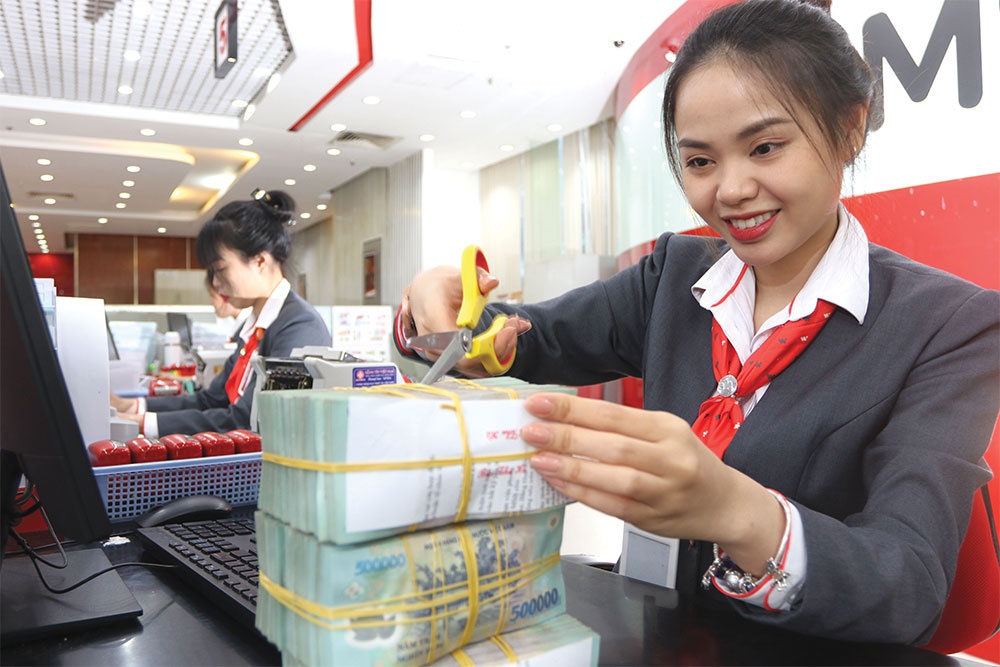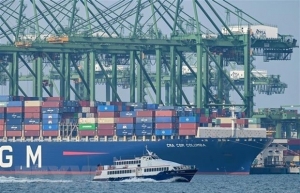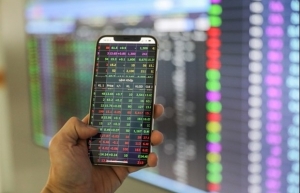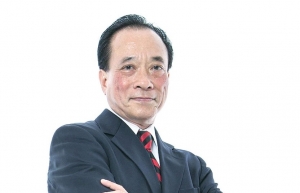Pressure on to support new economic growth
The latest move from the Fed marked eight consecutive rate hikes since March 2022, with no signs that it has reached the peak of its hike journey. Assoc. Prof. Dr. Dinh Trong Thinh, a financial expert from the Vietnam Association of Financial Advisers, predicted that a rate hike of 25 percentage points was anticipated. Thinh stated that, in general, the pressure on the USD/VND exchange rate from the Fed’s interest rate hike is not significant.
 |
| Pressure on to support new economic growth, photo Le Toan |
Dr. Le Dang Doanh, former head of the Central Institute for Economic Management, also believes that the Fed’s interest rate rise is targeted to contain inflation in the US, since inflation has begun to fall from the previous year’s low level. The USD price will adjust as a result.
“A change in the price will influence the exchange rate between it and VND, impacting import-export businesses and foreign-invested enterprises,” said Doanh.
On the other hand, deposit interest rates at some commercial banks in Vietnam have showed signs of cooling down, down from 0.1 to 0.5 per cent per year compared to the end of 2022. Experts believe that interest rates cooled partly because of banks’ weaker demand to lure deposit money. Therefore, banks will not need to mobilise as much as at the end of last year.
At the end of January, Prime Minister Pham Minh Chinh called for commercial banks to lower lending rates. SSI analyst Trinh Thai, however, expressed her concern that this is not an administrative level request. “The call is likely more the form of a directed communication to boost market sentiment. In reality, we observe that deposit rates for terms over six months were being lowered at some banks during January, though the reduction level is marginal, at only about 50 basis points (bps).”
Currently, deposit rates are ranging from 8-9.5 per cent per annual for regular depositors, but lending rates have not moved yet, still at around 12-15 per cent annually, Thai added.
“Depositors might find this time period to be calming to mark the peak of deposit rates that had spiralled ever higher during 2022. We also do not think there will be another pressing liquidity constraint that has sent interbank rates soaring, as seen in late 2022,” Thai said.
Having, Thai explained, medium-term systemic liquidity has still not yet improved, while default risks remain for the corporate bond market. “While the peak in rates might be soon over, if not already, deposit and lending rates will likely not see a significant downward adjustment throughout 2023,” she said.
On the flip side, Hoang Thi Minh Huyen, a macroeconomic analyst at Bao Viet Securities, predicted, “The pressure to support economic growth next year is huge, so it is also one of the factors that cause interest rates to drop to support economic growth. For the whole of 2023, interest rates will decrease by about 50-100 bps.”
Regarding inflation in Vietnam, an expert at HSBC Vietnam told VIR, “While yearly headline inflation was relatively low at 3.2 per cent, Vietnam continues to see stronger inflation pressures. December was the third consecutive month of inflation overshooting the State Bank of Vietnam’s (SBV) 4 per cent ceiling.”
Not only has core inflation accelerated to 5 per cent on-year, but Vietnam has also seen elevated prices for raw materials. This means the SBV will likely continue its tightening cycle. As the last central bank in ASEAN to move, the SBV has been actively playing catch up, hiking by 200 bps in 2022, the expert added.
“While we expect the SBV to slow its monetary tightening pace as the Fed is expected to slow and FX volatility has eased, its hiking cycle will be still underway. We expect the SBV to raise its refinancing rate by 50 bps each in the first half of 2023, taking the refinancing rate to 7 per cent,” the HSBC expert noted.
Standard Chartered also forecasts USD-VND at 23,200 by the end of Q1 and at 23,500 for mid-2023, while its H2-2023 forecasts remain unchanged. An improving current account balance backdrop and tourism recovery is likely to be supportive of the VND, Standard Chartered said, while FX volatility will remain elevated, and a wider trading band will allow for more FX flexibility.
According to Standard Chartered’s FX Alert, the combination of an earlier-than-expected China reopening, signs of softening inflationary pressures in the US, and one-way market positioning have led to a sharp rally in ASEAN currencies versus the USD in recent months.
However, the performance has diverged significantly in the region. The bank expects such uneven performance to lead to relative-value opportunities within the region against a backdrop of a more nuanced outlook for USD. Standard Chartered revised its FX forecasts lower to consider positive themes that have emerged in recent weeks, particularly the reopening of China.
 | IMF lowers economic growth forecast for ASEAN region Singapore and other Southeast Asian Nations (ASEAN) economies are seeing downgrades to their 2023 growth outlooks because slowing global growth will outweigh the positive impact from China's economic reopening, International Monetary Fund (IMF) chief economist Pierre-Olivier Gourinchas said on January 31. |
 | Economic growth and market upgrade to draw capital The prospect of economic growth and market upgradation is the driving force to attract cash flow into the stock market. |
 | Gauging efficient investment channels for the year Looking back on 2022, right from the outset of the year, the economy rebooted strongly, reflected in economic growth data and banks’ lending practice. Yet by the end of the year, there were signs growth slowing due to the impacts from external and internal factors on the economy. |
What the stars mean:
★ Poor ★ ★ Promising ★★★ Good ★★★★ Very good ★★★★★ Exceptional
Related Contents
Latest News
More News
- Sustainability a core value for DKSH’s vision (January 07, 2026 | 16:00)
- People encouraged to contribute and grow at AstraZeneca Vietnam (January 07, 2026 | 15:48)
- Dat Bike accelerates sustainable mobility (January 07, 2026 | 15:24)
- Innovation to support modern healthcare development (January 07, 2026 | 10:00)
- Six localities record double-digit growth as regional performance diverges in 2025 (January 06, 2026 | 18:00)
- E-commerce market undergoes transformation amid rising competition and regulation (January 06, 2026 | 17:54)
- Vietnam’s industrial output hits seven-year high in 2025 (January 06, 2026 | 17:47)
- GELEX’s credit rating outlook upgraded to 'Positive' by VIS Rating (January 06, 2026 | 16:49)
- Finance sector lays firm groundwork for 2026 after major reform (January 06, 2026 | 15:30)
- Vietnam’s seafood exports surpass $11 billion in 2025 (January 06, 2026 | 08:51)

 Tag:
Tag:




















 Mobile Version
Mobile Version